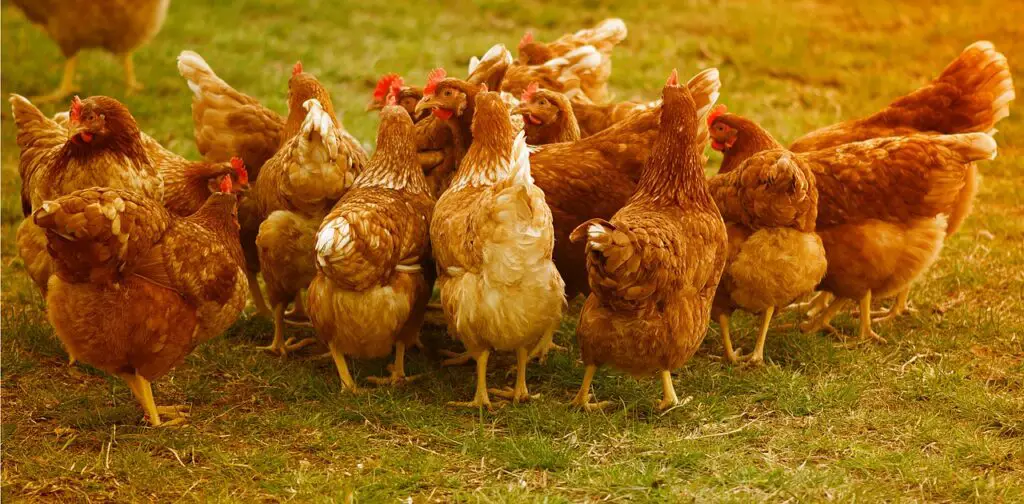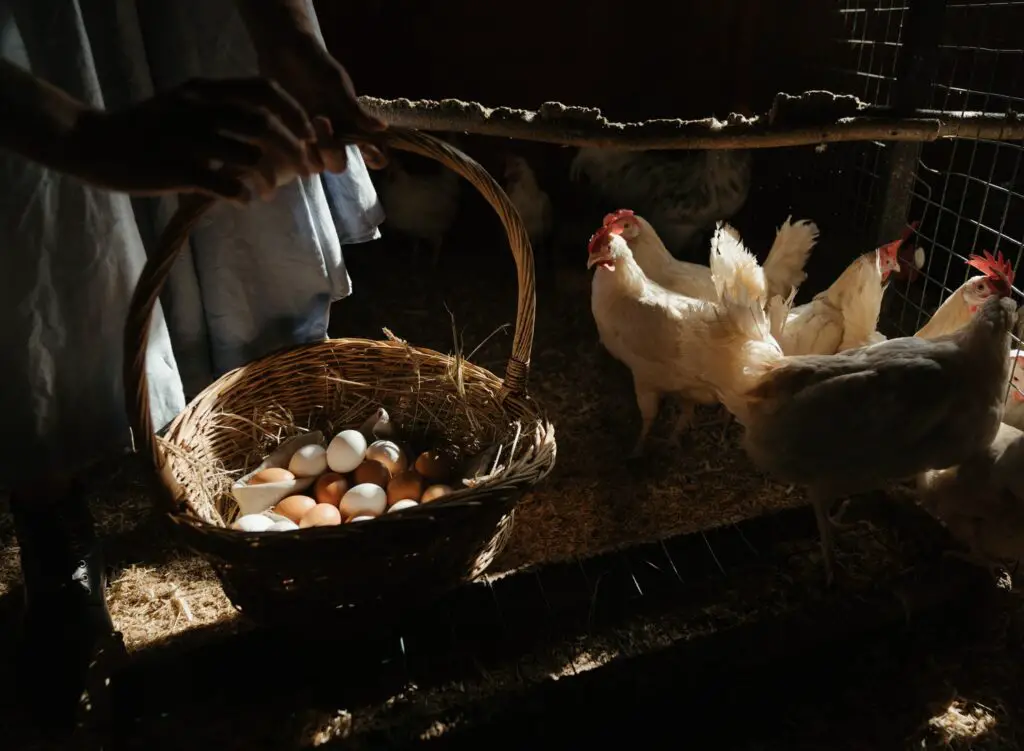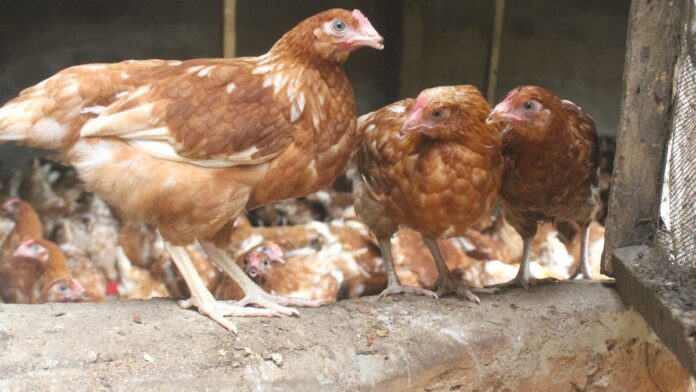Some links on this page may contain affiliate links which means that, if you choose to make a purchase using the link, Agricfy.com may earn a small commission at no extra cost to you. For more information, go to our Affiliate Disclosure Page!
Introduction

Poultry farming is one of the most lucrative businesses in the world today.
As a beginner, there are many breeds of hens you can choose from.
Your choice of breed depends solely on your reason for starting poultry farming.
There are three types of hens: layers, broilers, and dual-purpose hens.
This article will show you the best-laying hens for a beginner.
Some laying hens can be quite difficult to handle for beginners.
As a beginner, you can choose to raise hens for commercial purposes or personal use. Whichever it is, you can start raising laying hens in your backyard.
You must first know the laws and regulations guiding your community.
You need to know if you are permitted to raise hens in your backyard. If not, then you have to get a separate space for them.
After settling on where to raise the hens, you can then choose the best-laying hen to start with.
However, there are lots of factors you have to consider before choosing the best-laying hens.
What Is Poultry Farming?

Poultry farming has to do with raising a large number of domestic birds on a farm or in an open space.
Many farmers are into poultry farming for either commercial purposes, personal reasons, or to maximize profit.
A large number of poultry farmers prefer to raise chickens because it is the most popular and most sorted for.
Generally, there are three different types of chickens: layers, broilers, and dual-purpose.
Layers are raised specifically for their eggs.
Broilers are raised for their meat.
While dual-purpose chickens are raised for both eggs and meat,
What Is a Laying Hen?

A “laying hen” is the name given to a female chicken that is specifically raised for the purpose of laying eggs.
Layer hens are very productive and need extra care and management.
According to compassion on world farming, in the United States of America, hens produce about three hundred and two eggs annually.
Layers reach maturity around 20–22 weeks after birth.
They start laying eggs at about 18-19 weeks of age and keep laying till about 73–78 weeks.
There are two types of egg-laying hens.
- White egg-laying hens: Examples are: white leghorn, ancona, Hamburg, etc.
- Brown egg-laying hens: examples are: Australorp, Barbevelder, Brahma, Orpington, Plymouth Rock, Rhode Island Red, and Sussex.
The color of the eggs depends on the genetic factor.
But it doesn’t affect the quality of the eggs.
Also, the color doesn’t affect its taste.
Factors To Consider Before Raising The Best LAYING HENS
Before you choose to raise layers, you must consider a number of factors that can affect their growth and productivity.
If these factors aren’t considered, you may lose the chickens and run at a huge loss.
Layers are of great importance and need adequate time and attention.
As a beginner, here are some factors to consider:
- Location: You should choose the best housing system for the layers.
It is best to start raising layers in a rural area, as this will save cost and maximize profit.
Your choice of housing system will determine how fast and healthy your layers will be.
The battery case is the best housing system for layers, though there are other housing systems like barn systems and free-range systems.
- Nutrition: It is very important to consider an affordable and safe feeding system for the layers.
As a beginner, this may be quite difficult, but you can get their feeds from the local market or try to make them at home.
You must ensure that the feed contains protein, minerals, and calcium, which are very necessary for the layers’ growth and development.
- Availability of water: The layers must have access to clean water, either warm or cold, depending on the climatic conditions.
- Vaccination: In order to keep the layers free of diseases, infections, and sudden death, the hen must be vaccinated.
Vaccination makes the outer layers disease resistant.
All vaccination equipment must be cleaned and sterilized.
If you aren’t sure of how to do it as a beginner, you can seek advice from a professional.
- Spacing: Each layer must have enough space to lay its egg.
Ideally, a laying hen needs about 2.5 to 3 square feet of space between them.
Limited space will increase the chances of cannibalism’s disease spread and mortality rate.
- Ventilation: Your choice of housing system needs to be well-ventilated.
That is, there must be adequate circulation of air in the house.
Heat stress can stress the layers and reduce their production rate.
It could also lead to death.
- Lighting: The housing system should be moderately lit and never pitch dark. Light is very important for
- Feeding
- Sexual activities
- Increased egg production
It is better to use natural light than electric light.
As electricity, light can increase the room temperature, which can lead to heat stress.
- Bodyweight: The general weight of the layer can affect its egg production.
During the laying period, the layer should be about 1.5 kg.
They shouldn’t be overweight or underweight.
So it is best to regulate what they eat so they can grow into their normal size.
- Proper Management: It is important to manage the layers efficiently.
This will increase their productivity and maximize their profit.
The Best Laying Hens for Beginners
There are lots of chicken breeds, but there are some unique ones that lay eggs well.
Some in large numbers and some in small numbers.
Some of the best laying hens are:
1. Chicken Golden Comet
This chicken yields about two hundred and eighty eggs per year.
The eggs are always medium-sized and brownish.
The golden comet is easy to raise and doesn’t make much noise.
2. Leghorn Chicken
This chicken, unlike the golden comet, lays about two hundred and fifty eggs per year.
The eggs are usually medium in size but white in color.
The Leghorn is a very shy chicken, but very attractive.
It has beautiful white feathers and a red comb on its head.
However, they are quite hard to tame despite being shy.
3. Barnevelder Chicken
This chicken breed lays two hundred eggs per year.
The eggs are dotted and smaller than the edges of other breeds.
4. Chicken Buff Orpington
This chicken breed lays about two hundred eggs per year.
The eggs are light brown and of medium size.
It is a very friendly burd that can be kept as a pet.
5. Easter Egger
This particular chicken breed lays about hundred and fifty eggs per year.
It is a hybrid bird and comes in light blue.
Its size varies from medium to large.
The easter egger produces good quality eggs, and this can yield extra income for the farmer.
6. Sussex
This breed produces about two hundred and fifty eggs per year
It has about eight colors.
The Sussex can lay about 4–5 brown eggs every week.
It continues to grow even in cold weather.
7. Australorp
This particular chicken breed lays about three hundred light brown eggs in a year.
That is about 4-5 eggs per week.
This breed is usually raised in Australia.
They are also very friendly, well-mannered, and quiet.
8. Plymouth Rocks
This is an American breed and is used as a foundation for hybrid breeds.
It also lays about 4 or more brown eggs per week.
9. The Golden Comet
This is a hybrid hen.
It can lay about two hundred and eighty eggs in a year. That is about five eggs per week.
10. Rhode Island Crimson
This is a very popular breed because it serves two purposes.
It lays eggs and produces meat too. It is easy to raise, it’s friendly, and the meat is yummy.
11. Ancona Chicken
This was first raised in Italy.
The ancona breed was named after the ancona city in Italy.
It is a restless, active and large bird.
It lays about two hundred eggs per year. The eggs of the ancona are very large and white.
12. Hamburg Chicken
This breed originated from Germany and the Netherlands.
Like the Ancona chicken, it also lays about two hundred eggs per year.
It lays medium size white eggs. This breed is small in size and needs to be properly taken care of so that it can produce bigger eggs.
13. Minorca
This chicken breed lays fewer eggs per year.
But their eggs are of very good quality.
The minor breed lays about two hundred eggs per year.
Their eggs are white and very big.
The minor breed is quite friendly and easy to raise.
14. Lohman Brown
This particular chicken breed lays about two hundred and eighty eggs per year.
It is a known breed in South Africa.
The eggs are very brown and very big.
15. Brahma
This is an American breed of hen.
It is dual-purpose and lays about one hundred and fifty eggs per year.
The eggs are very large and brown. The Brahma breed is very calm and smart, it can be domesticated.
This chicken breed lays about three to four large eggs per week.
Conclusion
Hen Layers need extra time, attention, and a high management level.
If any of these is lacking, the farmer may run at a loss.
As a beginner, you must choose the best-laying hens to maximize your profit.
The layers start laying eggs when they are five months old.
The first eggs are smaller, but as they grow older, they become bigger.
But as they grow older, they lay fewer numbers of eggs.
It is also very important that before starting up a layer farm you consider the housing system, the breed, nutrition, climate, space, ventilation, time factor, and the location of your farm.

I’d have to examine with you here. Which is not one thing I usually do! I take pleasure in reading a post that may make folks think. Additionally, thanks for permitting me to comment!
Thanx for the effort, keep up the good work Great work, I am going to start a small Blog Engine course work using your site I hope you enjoy blogging with the popular BlogEngine.net.Thethoughts you express are really awesome. Hope you will right some more posts.
I like the valuable information you provide for your articles. I’ll bookmark your weblog and check once more here regularly. I am rather certain I will learn lots of new stuff right here! Best of luck for the next!
Hmm is anyone else having problems with the pictures on this blog loading?
I’m trying to find out if its a problem on my end or if it’s
the blog. Any responses would be greatly appreciated.
Check it out now it should be better
This is really fascinating, You are a very skilled blogger. I’ve joined your feed and look ahead to seeking extra of your great post. Additionally, I’ve shared your site in my social networks!
Hiya, I am really glad I’ve found this information. Nowadays bloggers publish only about gossips and web and this is actually annoying. A good site with exciting content, this is what I need. Thanks for keeping this web-site, I’ll be visiting it. Do you do newsletters? Can’t find it.
Do you mind if I quote a few of your articles as long as I provide credit and sources back to your weblog? My website is in the very same niche as yours and my visitors would truly benefit from some of the information you provide here. Please let me know if this alright with you. Thanks a lot!